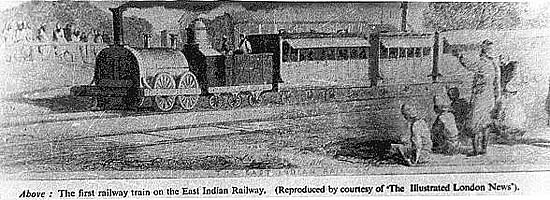
Unit 4: Nationalism, Industrialism, and Imperialism
Lesson B: Resistance to European Rule in India and SE Asia
Activity 6: The Impact of British Rule on India
In the previous activities, you learned about the events that led to the creation of British India and examined images of these events from different perspectives. Read about how British rule impacted India's political, economic, and social systems.
Political Transformations
Prior to British rule, India had an emperor (monarch) and regional princes who made all of its political decisions. Under British rule, the British government appointed local princes as governors to run the daily operations of India. Local princes maintained their titles of "prince," but they did not have power under British rule.
Economic Transformations
Economically, many Indians suffered. Prior to British rule, Indian peasants were mostly self-sufficient. They grew most of their own food and produced most of their own cloth and other items.
Under British rule, many farmers grew cash crops like tobacco, tea, or sugar. This led to a lack of food and sometimes resulted in famine. Since the British imposed high taxes on Indian manufactured goods, few factories existed in India.
Investments by Great Britain did have some long lasting benefits to India's economy. The Indian railroad system created over a half million jobs and allowed for the transportation of resources across India. Great Britain also improved the irrigation system and the communication systems. Both of these improvements increased agricultural production and gave more Indians jobs.
Social Transformations
Socially, the British implemented many changes that transformed Indian society. The British established schools for both boys and girls. This led to women entering professions such as medicine for the first time.
Other social transformations for Indian women included laws to outlaw the practice of satee (suicide after husband's death) and to allow widows to remarry. In other aspects of society, the Caste System remained strong with most benefits under British rule given to Brahmans -- those in the top caste.
![]() Directions: Read each event below and then select the transformation that it best matches. Use the buttons provided to check the latest move or, when you are done, check the whole question.
Directions: Read each event below and then select the transformation that it best matches. Use the buttons provided to check the latest move or, when you are done, check the whole question.
Written Activity - Notebook
Think about the different perspectives that the British and Indians might have had on the transformations in India. In your notebook, respond to the following questions:
- Which of the transformations that you read about might a native of India believe was the most significant transformation in India? Justify why a native of India might find this to be the most important. What role did perspective have in your choice?
- Which of the transformations that you read about might a native of Great Britain believe was the most significant transformation in India? Justify why a native of Great Britain might find this to be the most important. What role did perspective have in your choice?
Page Notes:
[1] Source: This image from http://en.wikipedia.org/wiki/File:First_Train_of_East_Indian_Railway-1854.jpg is in the public domain because its copyright has expired.



